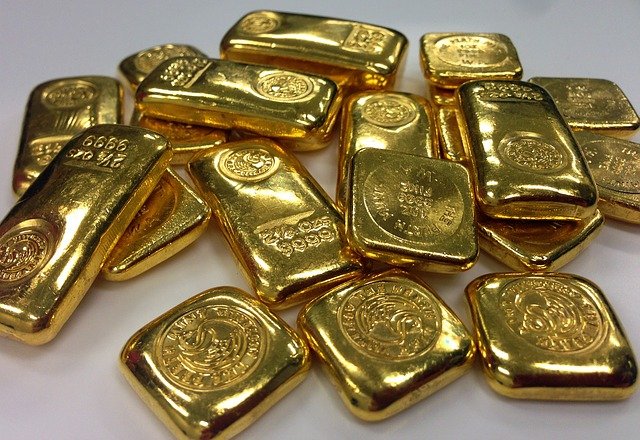It is a long and complicated way until pure gold is available in the generally known form. Even the mining of the precious metal is costly and difficult. Although the discovery of gold nuggets still characterizes the image of many when it comes to gold, by far the largest part of the world’s gold deposits is found in metallic form in the earth’s crust. It must therefore first be extracted from the rock after mining and processed.
The gold separation process to increase the fineness
After the extraction of industrial gold, the next step is the gold separation process. Industrial gold has a gold concentration of around 80 percent. In addition to gold, industrial or raw gold also contains other precious metals such as silver or copper.
The gold separation process further refines the industrial gold, resulting in pure gold with a fineness – depending on the process – of more than 99 percent.
To obtain fine gold, on the one hand industrial gold is further refined, but also scrap and recycled gold is used. The fineness of the gold can be increased in different ways. Overall, there are various methods for gold refinement, but the most common methods are the Miller process, the Wohlwill process and the Borax process.
The Miller process
The Miller process is the most commonly used method for obtaining fine gold. Although this process can only be used to extract gold with a fineness of 99.95 percent, the Miller process is comparatively simple and thus a correspondingly fast and cost-effective method.
The Miller process utilizes the property of other contained base metals, such as silver, which form a solid chlorine compound at certain temperature conditions using chlorine. In this way, the gold can be separated and purified from the other metals still contained in the industrial gold.
The Wohwill process
The Wohlwill process is a much more complex and costly method of recovering fine gold. However, the fineness of the fine gold obtained in this way is 99.99 percent.
In this process, the gold is separated from the other metals in an electrolysis bath. After the process, all base metals remain in the anode slime and the gold sand thus obtained can be skimmed off, remelted and processed into ingots, for example.
The borax process
It is a long and complicated way until pure gold is available in the generally known form. Even the mining of the precious metal is costly and difficult. Although the discovery of gold nuggets still characterizes the image of many when it comes to gold, by far the largest part of the world’s gold deposits is found in metallic form in the earth’s crust. It must therefore first be extracted from the rock after mining and processed.
The gold separation process to increase the fineness
After the extraction of industrial gold, the next step is the gold separation process. Industrial gold has a gold concentration of around 80 percent. In addition to gold, industrial or raw gold also contains other precious metals such as silver or copper.
The gold separation process further refines the industrial gold, resulting in pure gold with a fineness – depending on the process – of more than 99 percent.
To obtain fine gold, on the one hand industrial gold is further refined, but also scrap and recycled gold is used. The fineness of the gold can be increased in different ways. Overall, there are diverse methods for gold refinement, but the most common methods are the Miller process, the Wohlwill process and the Borax process.
The Miller process
The Miller process is the most commonly used method for obtaining fine gold. Although this process can only be used to extract gold with a fineness of 99.95 percent, the Miller process is comparatively simple and thus a correspondingly fast and cost-effective method.
The Miller process utilizes the property of other contained base metals, such as silver, which form a solid chlorine compound at certain temperature conditions using chlorine. In this way, the gold can be separated and purified from the other metals still contained in the industrial gold.
The Wohwill process
The Wohlwill process is a much more complex and costly method of recovering fine gold. However, the fineness of the fine gold obtained in this way is 99.99 percent.
In this process, the gold is separated from the other metals in an electrolysis bath. After the process, all base metals remain in the anode slime and the gold sand thus obtained can be skimmed off, remelted and processed into ingots, for example.
The borax process
The borax process is a more environmentally friendly method than the two previously described methods because it produces lower mercury emissions. It also has the advantage that a fineness of gold of up to 99.99 percent can be achieved, but also a lower fineness depending on further use. In this process, the still impure gold is separated from other metals with the addition of mineral borax.








